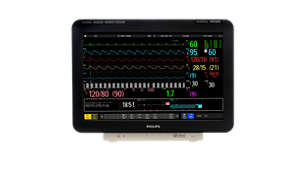
You’re connected, but are you protected?
The digitization of healthcare has given caregivers the power to access, analyze, manage, and share data in ways never before possible. It has also made your medical devices, systems, networks, and hospital data highly vulnerable to cybercrime.


Malicious computer viruses, worms, and hacker intrusions.

Sophisticated attacks demanding ransom for access to your own clinical data.

Hostile attempts to breach valuable personal information stored in healthcare records.
The threats are rarely clear, but always present. They can have a lasting impact on the security of your infrastructure, the interoperability of medical devices and clinical systems, and the integrity of patient data.
The impact of cybercrime is measurable
13M+² medical records were stolen in the US in 2018 alone1

Your security is our mission
Philips holistic strategy is based on the guiding principles of “security by design.” We unite the power of our people, processes and technologies to protect the confidentiality, integrity, and availability of critical clinical and personal data across the entire care lifecycle. We understand that your cybersecurity is only as strong as its weakest link, so our goal is to make sure that Philips patient monitoring clinical networks and systems are not an entry point for an attack.

Security is designed into our products
Security is always top of mind at Philips. Not just network, infrastructure, and data protection. But device protection. Cybersecurity is built into Philips Patient Information Center IX, new generation bedside monitors, and mobile handhelds -- from design and development to testing and deployment. Our monitoring devices and networks include node authentication and data encryption to secure patient information within and beyond the walls of your enterprise.

Meet the latest industry security standards
We support robust security policies and procedures, employ established encryption technologies, and comply with regulatory data protection standards. Philips actively engages with government agencies, industry partners and providers to close healthcare security loopholes and implement safeguards.
Security by design goes beyond products and networks
With Philips “security by design” solution, you can choose from a comprehensive range of services to keep your monitoring network, systems and devices up to date, performing at peak capacity, and shielded from the constant threat of cyberattacks.
* Only available on eligible versions of Philips Patient Information Center IX
Get the support you need to be cybersecure
Our dedicated consultants work with you one-on-one to provide the ongoing support you need to develop an IT environment you can trust to withstand cyberattacks with confidence, including:





Working with you to win the battle against cybercrime
Philips is your partner of choice in your quest to protect the privacy of your patients and the integrity of their data from the constant threat of healthcare cyberattacks. We’re committed to working with you and your team to implement recommended safeguards designed around your infrastructure, your organization, and your patients. Together we can build a more secure healthcare enterprise
“Cybersecurity is front and center in the transition to connected care.”
- Jeroen Tas, Chief Innovation & Strategy Officer, Philips
Want to talk to a sales rep for a price quote? Or stay up to date on our latest news and innovation in patient monitoring?
Complete the form and someone will get back to you.
Protection where it matters: at the central station, the bedside and on the move

Philips Patient Information Center IX
Related products
-
IntelliVue MX800
The IntelliVue MX800 is Philips first patient care solution to incorporate patient monitoring and clinical informatics. Designed to simplify access to patient information you need to enhance diagnostic confidence throughout the hospital.
865240
1. HIPAA Journal, posted on Dec. 27, 2018 2. HIPAA Journal, posted July 12, 2018 3. IBM X-Force Threat Intelligence Report 2016

